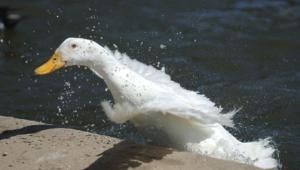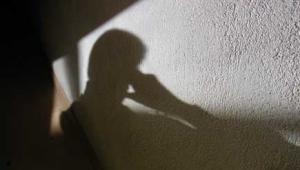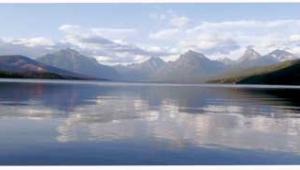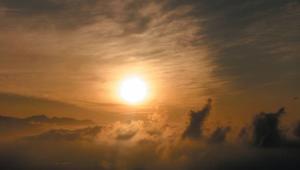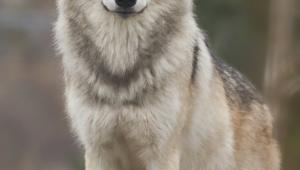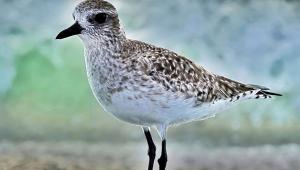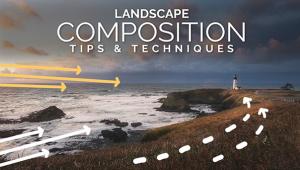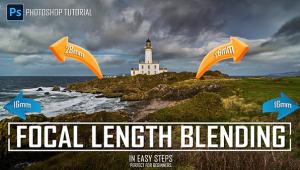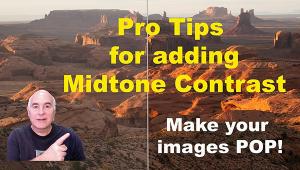Jay Dickman: The camera is his passport Page 2
After he won the Pulitzer, the Times-Herald wanted to send Dickman to Beirut, but he felt it was time to make a decision. "I turned them down," he says. "Although war photography is powerful and it still draws me, I decided it was time to try something new."
 |
|
|
For some time, he and Becky had
discussed the possibility of moving, as they enjoyed their travels to Colorado
and New Mexico. In 1986, they made Denver their home, and Dickman got a job
with the Denver Post. Unfortunately, the timing was bad. One of the newspapers'
major advertisers closed their doors because of the declining economy in the
mid-'80s, and the Post soon imposed a hiring freeze. Two months after
Dickman started working for them, the Times Mirror sold the Post to Dean Singleton,
who had also recently bought the Times-Herald. Originally Dickman was hired
as a special projects photographer for the Post, "but when the paper was
sold, that all disappeared."
He remained an full-time employee of the Post for the time being but also met
Barbara Sadick, who headed up Matrix, a new photo agency that assigned photographers
to news-based stories. "I was still working full-time at the Post while
she was busy trying to get me work in New York," he says. Sadick got a
job for Dickman photographing several members of the U.S. Olympics team around
the country for U.S. News & World Report. After some exhausting travel back
and forth between Denver and New York in an effort to do both jobs, Dickman
quit the Post.
The Top of His Game
Dickman was invited to World Press Photo's 30th anniversary celebration
as a spokesman at the International Center for Photography in New York. After
the WPPA dinner, he was approached by Tom Kennedy, the director of photography
for National Geographic, who suggested that Dickman do some work for the magazine.
He was understandably excited. "I had actually photographed Peter Jenkins
walking across the U.S. in 1979, with the idea of submitting the images to National
Geographic," Dickman says.
 |
|
|
His first assignment for the venerable
publication was in 1988, photographing the wildfires in Yellowstone National
park. This was followed by an assignment in Papua New Guinea, "where we
lived in a stone-age village for three months." Dickman works on a contract
basis for Geographic, and has done numerous photo assignments for them, including
one on the Yukon River that spanned a year's time. "I love working
for Geographic," he enthuses. He works closely with the magazine's
photo editors, and says that photographers are even involved with the final
editing and layout during a session called "the Wallwalk." He says,
"It's such an amazing process in helping develop the final output,
knowing that 20 million people around the world will see your work, and that
you have input."
Dickman says that the first roll of film he shoots for a Geographic assignment
can be the scariest but, "The magic is always there to define my view
on a subject. When that's over, forget it--I'll go to work
for McDonald's," he laughs. Although many of Geographic's
assignments are gruelling, he asserts, "I want to do this job until I
physically can't anymore."
About 21¼2 years ago, Olympus America sponsored A Day in the Life of
Africa, and supplied the contributing photographers with E-20 cameras--the
company's first all-digital assignment. Dickman participated in this project,
which was headquartered in Paris. He says that Olympus sought advice from professional
photographers, and "The E-1 was highly impacted by input from the pros."
In 2003, Dickman was asked to participate in the Olympus Visionaries program,
which was established to "provide a venue for professional photographers
to realize their creative vision through digital photography--and to provide
Olympus with input from the professional photographic community," according
to Olympus.
 |
|
|
Shooting Film & Digitally
The Olympus E-1, with its accompanying lenses and accessories, is Dickman's
digital camera system. He uses 11--22mm, 14--54mm and 50--200mm
digital lenses, "and when the situation calls for it, a 300mm f/2.8."
He also uses the Nikon F5 and F100 when shooting film, with an FM2 as a backup.
On assignment, he brings 20mm and 85mm lenses for his FM2, and 17--35mm
f/2.8, 80--200mm f/2.8, and 60mm macro for the F5 and F100 bodies. Dickman
comments, "Everything can be covered with those lenses." He still
hand-meters lighting for accuracy, rather than relying on TTL metering. "I
try to simplify things and use what I know will work for me."
As Geographic mandated that assignments be shot on transparency film in the
past, Dickman has used mostly Fujichrome Velvia 50 (and recently, Velvia 100)
film. "What I love about this emulsion is that it renders colors the way
you remember them." When he photographs people, Dickman adds that he uses
less color-saturated films like Fujichrome Provia 100F. Addressing the digital
vs. film issue, he notes, "Whether you capture a subject digitally or
with film, it's still photography. You use what's necessary--that's
the exciting thing about imaging."
New Avenues
Olympus is one of the sponsors of Dickman's workshop series. He's
conducted workshops and seminars for Maine Photographic Workshops and the U.S.
Navy, but FirstLight Workshops is his own project. His first workshop, held
in Auvillar, France in 2003, was "a raging success." The next one
is planned for September, 2004, in the Western Highlands of Scotland. Participants
will spend five days with two notable photographers, an Adobe Photoshop expert,
and a top Geographic photo editor. And, as an added bonus, "FirstLight
prints a magazine that features only the students' work," Dickman
points out, "and it's laid out by a National Geographic photo editor."
Dickman concludes, "I feel that I'm incredibly fortunate to work
in a business I love." He retains a fresh enthusiasm about photography
and about life in general: "The camera has been an amazing passport for
me."
Adventure Travel Photo Advice
For those adventurous souls who love shooting travel pictures, Jay Dickman imparts
some words of wisdom.
1. Convey a sense of place in your images. You want to make
the viewer long to be there. "You must be hugely interested in learning
about a new country, place or culture, and capturing it on film or digitally,"
he says. When he travels on assignment, part of his job involves researching
an area before leaving home. Learning about an area, he says, is also a good
idea for you to do via the Internet, travel guides, and maps. Take a tour bus
when you arrive at your destination to get a broad, general overview of the
places you may want to photograph later. Photograph whatever it is about a particular
place that attracted you to it in the first place.
2. Study images that other photographers have taken. You don't
want to copy what others have done, he says; you just want to learn where the
photogenic spots are. Look at postcard racks, photography books, and anything
you can find pertaining to the area you'll be visiting. When you arrive,
you can explore new angles and perhaps some new views of your own.
3. Create a travel calendar, but be flexible. Dickman says
that some attractions that you want to shoot may prove to be "non-events,"
and you'll discover something more worthwhile to photograph once you get
to your travel destination. Allow time to get great shots. Some activities,
like kayaking or hiking, may be fun for you to photograph, and for your non-photographic
travel companions to participate in. But if you want to set up your camera gear
to shoot a beautiful scene at dusk, for example, be willing to separate from
your friends or family temporarily to allow them to do something else, like
going out to dinner.
4. Know your equipment. Dickman says, "You should be so familiar
with your camera that you can use it quickly and easily in different modes."
An exotic travel destination with fleeting photo opportunities is no time to
be fumbling with new, unfamiliar camera equipment. He also advises travelers
to keep gear clean: "Clean your camera equipment as you go."
5. A word on photographing people. "A camera allows you
to enter someone else's world," says Dickman. If you see somebody
on the street whom you'd like to photograph, wave and be friendly, he
advises. Don't be sneaky and shoot pictures when you think your subject
isn't looking. If you're going to a foreign country, it'll
take time to learn the language. But if you smile, point to your camera, and
a person sees that you're taking an interest in them, says Dickman, he's
found that many are pleased to allow you to photograph them. He suggests getting
pictures of people engaged in activities or their trade--like jewelry-makers
at a bazaar--rather than posing for the camera. On the other hand, if someone
doesn't want you to take his/her picture, "you can sense it a mile
away." He always honors a person's wishes.
6. Avoid Dangerous Areas. Especially with the problems in the
world today, Dickman asserts, "Be aware of your surroundings. Photographers
in third-world countries or other areas can be targets." He advises traveling
photographers to "whittle down your equipment and be less conspicuous.
You can carry some cameras inside a coat. The camera equipment shouldn't
be the most important factor here--it's the safety of the photographer."
He also advises getting a certificate of registration from customs for camera
gear.
7. Take lots of film or memory cards. You may shoot some images that
you'll want to enlarge. If you'll shooting digitally, you'll
need to allow space on your card for RAW or TIFF files for highest quality.
As Dickman point out, "CompactFlash cards are getting cheaper."
You can see more of Jay Dickman's work at www.jaydickman.net
or check out his workshop schedule at www.firstlightworkshops.com/scotland.
- Log in or register to post comments



